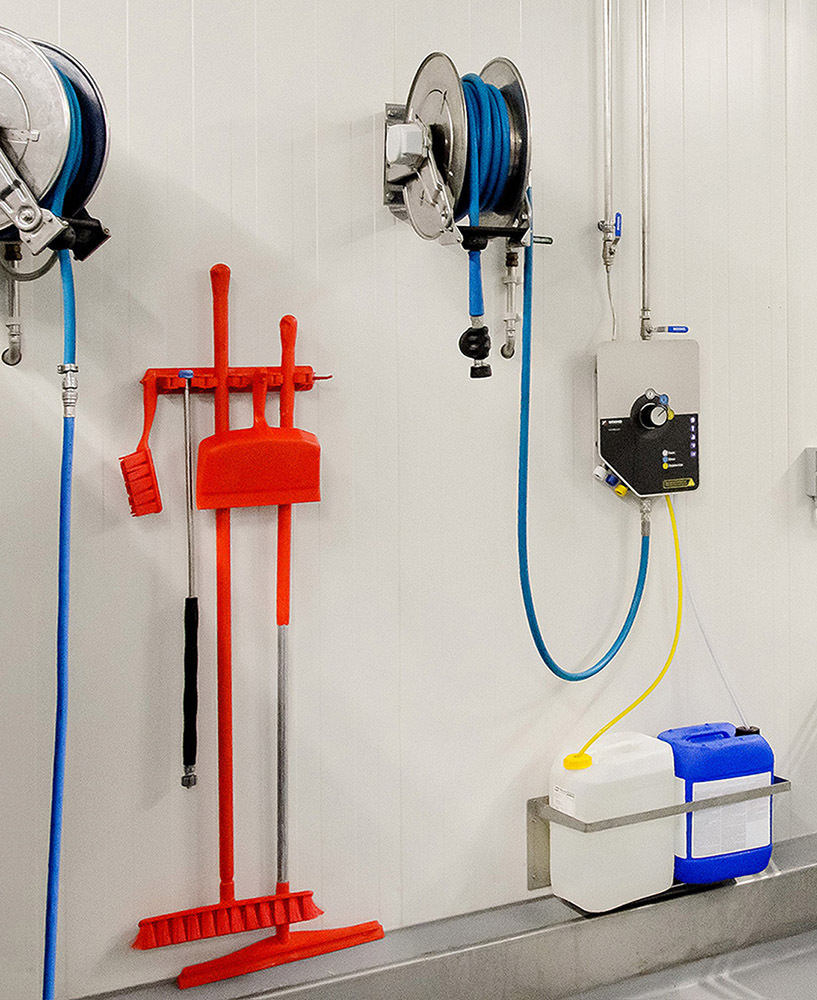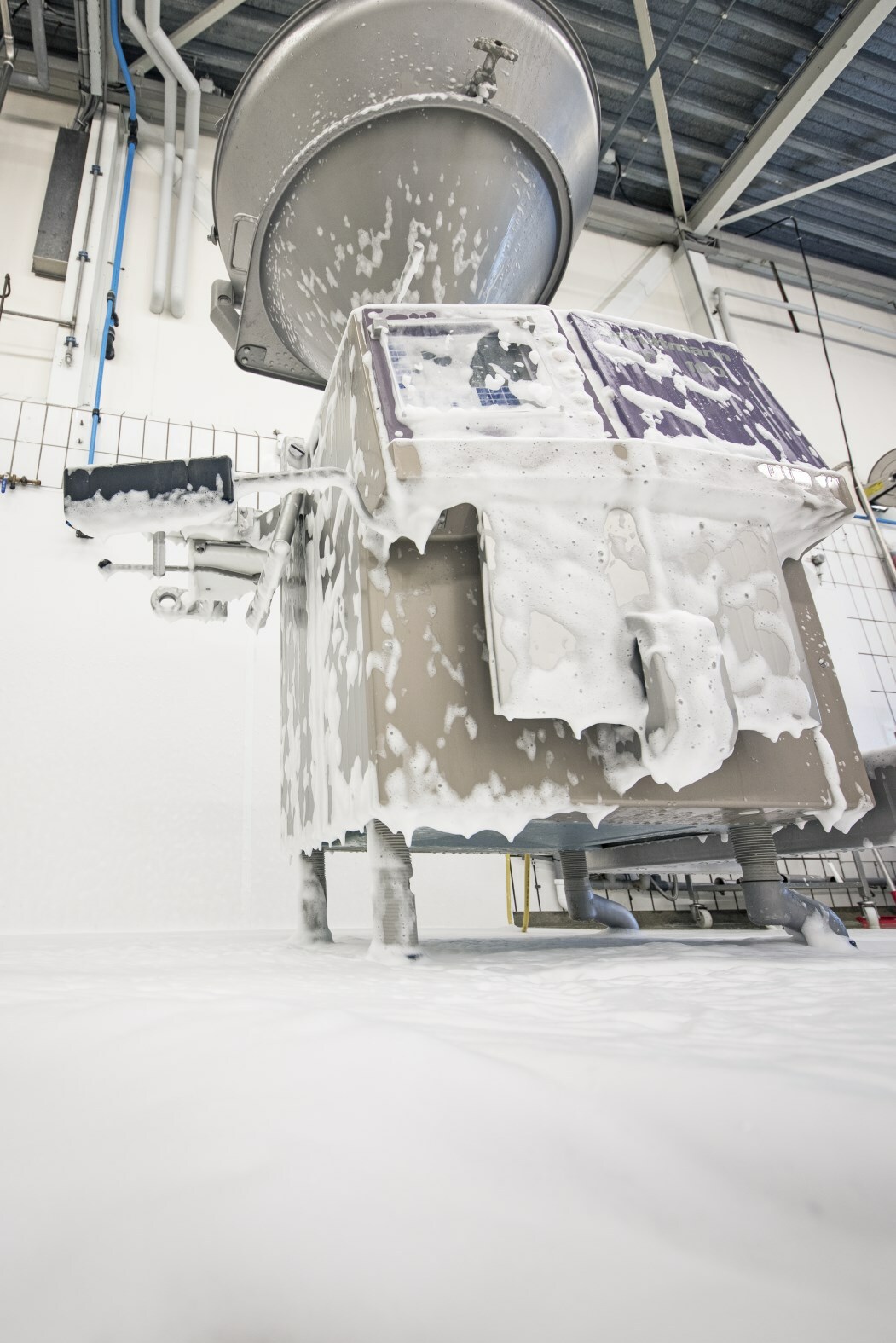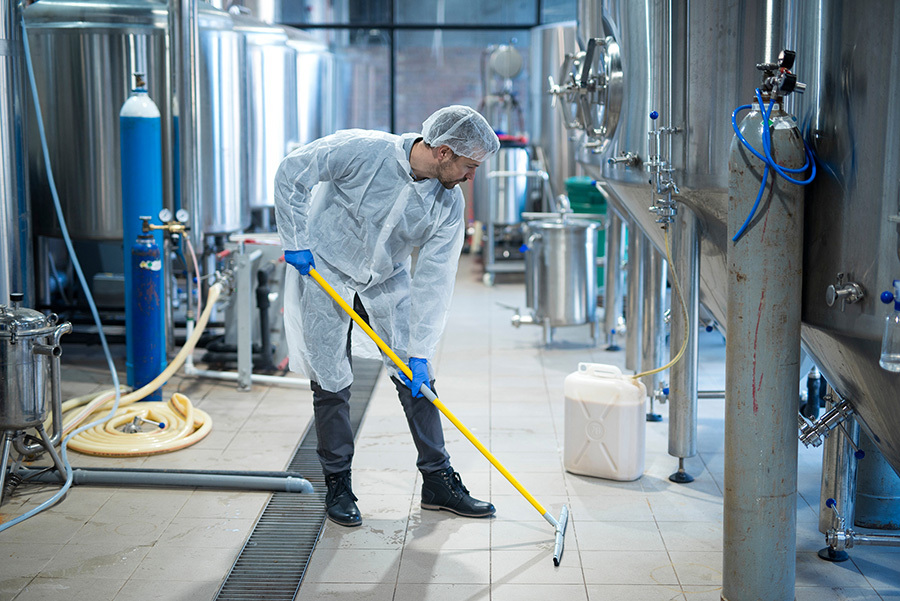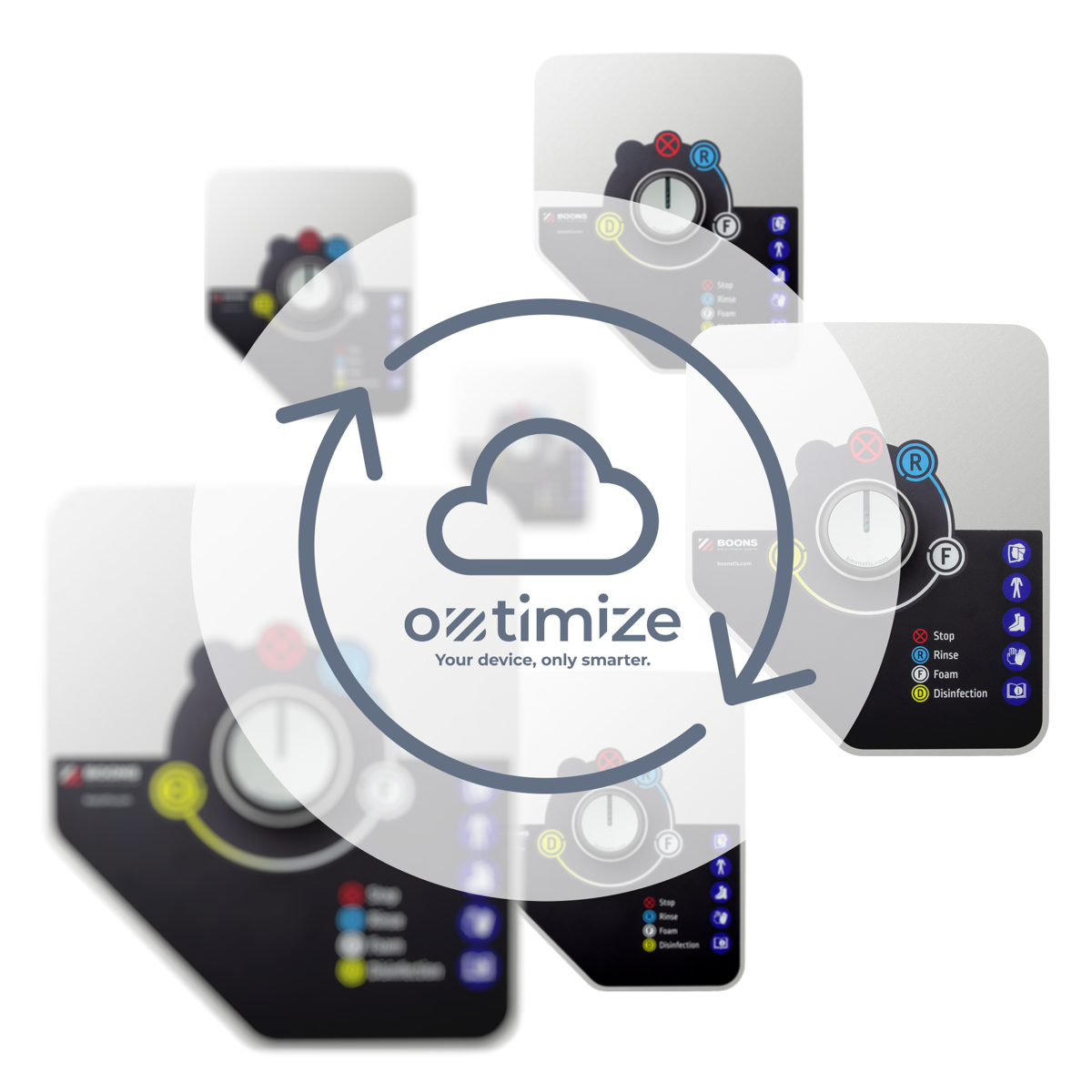Cleaning according to HACCP
- Monday 22 May 2023
- By: BOONS FIS
- Category: Foaming and disinfection installations
Within the food sector, certificates such as HACCP, BRC and FSCC are gaining in importance. In this way, the standards that food processing companies must comply with are becoming stricter. In many cases, good compliance with these standards starts with the personal hygiene of employees within a company.
What exactly is HACCP?
HACCP, which stands for Hazard Analysis and Critical Control Points, was created to ensure that the safety of our food is guaranteed. For a complete description, we refer to our blog page.
In order to obtain a certificate, your company must meet numerous guidelines. At a minimum, you should take into account the following principles:
- Determine the possible hazards of the processes within your company.
- The CCPs (Critical Control Points): Various points must be kept well under control to guarantee food safety.
- A standard is established per CCP.
- Record how the CCPs are systematically checked.
- Drawing up an action plan for each CCP.
- Regular checks on your HACCP plan are required and necessary adjustments need to be done.



The right cleaning process for your company
Cleaning via HACCP implies that cleaning procedures are used as standard. Important questions within this procedure are:
- How is cleaning been done and which steps are followed?
- How is disinfection carried out and according to which process?
It is therefore important to record this data in a protocol / written cleaning process.
Procedures
Chemicals are usually used to clean surfaces. Initially, check which surfaces need to be cleaned and which residues need to be removed. Based on this, you can determine the right (chemical) product for cleaning. This guarantees effective cleaning without affecting the (work) surface.
Next, it is examined how the surface can be disinfected. Here too, determining the right product is crucial for combating the type of micro-organism that needs to be tackled. Temperature and exposure time are of great importance here.
Chemicals
Precise determination of the right chemicals.
- Chemical dosage
The effectiveness of chemicals is determined, among other things, by the dosage. How is the chemical product dosed or diluted at your company and how do you check this? - Exposure time
The ideal exposure time of the chemicals used must be checked and recorded in the cleaning process. - Storage of chemicals
The chemicals must be stored in a safe place, inaccessible to unauthorized persons. - Efficient and correct cleaning also depend on other aspects of the 'Sinner Circle', which we explain in detail in another blog.
Cleaning procedures
In addition to the cleaning tasks themselves, the frequency of cleaning must also be recorded. At what times (before, during or after?) within the production process is cleaning carried out and at what frequency? This is also included in the description of the cleaning process.
All safety regulations for and by employees must be enforced at all times during cleaning. These procedures are also recorded in the cleaning process.
The use of the correct equipment and materials is also determined together with the correct doses, calibration and settings.
A procedure with regard to a final inspection is also established to conclude. Determine herein when the cleaning task is completed and how the final control is carried out. Collect the results of these controls, which will certainly be useful for any (external) checks or audits at a later date.

Products in this message

Obtimize
The laws and regulations on cleaning in the food processing industry have been extended and...
Station
CS‑FD‑1‑R
This CS centralised satellite is standard equipped with a stop and 3 positions: foaming (F),...

Station
DSW‑FD‑1‑R
The mechanically controlled DSW FD-1-R is a simple to operate decentralised cleaning station...

